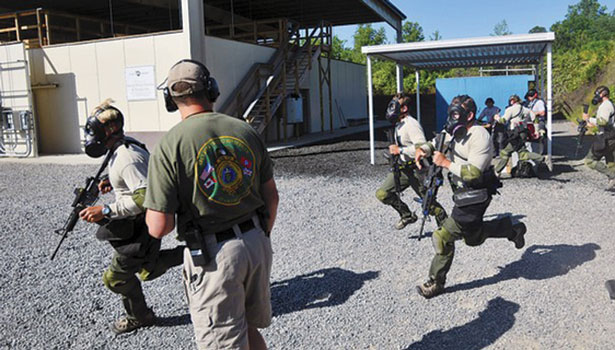It was about 4:30 a.m. in Oak Ridge, Tenn., when sensors on the perimeter intrusion detection and assessment system alarmed. There was an unauthorized entry into a high-security, protected area.
A well-trained and heavily armed guard force responded.
And they found Megan Rice, an 82-year-old nun; Greg Boertje-Obed, 57, a housepainter; and Michael Walli, 63, a gardener, all of whom started reading a statement about their beliefs and opposition to nuclear weapons.
Surprisingly, the trio had simply cut through fencing to hang banners in the dark, splash blood and paint messages on the facility, what turned out to be the $549 million fortress that contains America’s primary supply of bomb-grade uranium.
The target: the Y‑12 National Security Complex, one of four production facilities in the National Nuclear Security Administration’s Nuclear Security Enterprise. Its unique emphasis is the processing and storage of uranium and development of technologies associated with those activities. Y‑12 maintains the safety, security and effectiveness of the U.S. nuclear weapons stockpile.
Big Security Shakeup
The break-in, of course, led to the arrest of the three. It also led to a major shakeup in management and supervisors of security at the facility as well as action by the Secretary of the U.S. Department of Energy (DOE). It also spotlights the assignment, and ongoing debate, of contract security at the nation’s nuclear power, government laboratory, poison gas storage and warhead facilities, which demand the highest level of security.
Before they were ordered to halt and kneel, the protesters at Y-12 suggested they break bread with the guards and showed off a Bible, candles and white roses. They also sang.
The incident happened just this past late July and was not greatly covered except for local news reports.
Y-12 spokesman Steven Wyatt has said it was fortunate that no one was hurt or killed in the break-in: “The protesters put themselves at a high risk of losing their life in performing this act. We are thankful that did not occur.”
The Obama Administration responded to the break-in and what it called other protection shortfalls at the Y-12 National Security Complex by shifting critical site supervisors and temporarily relieving from duty certain defensive personnel, according to statements by Energy Secretary Steven Chu, adding that the incident “was not consistent with the level of professionalism and expertise we expect from our guard force and all of those federal employees and contractors responsible for security across the [Energy Department] complex.”
In a short-term way, the three intruders got what they wanted.
Chu said in early August, “We decided to halt nuclear operations at the site, the guards involved in this incident were suspended, the general manager of the contractor protective force [WSI-Oak Ridge General Manager Lee Brooks] and two members of his leadership team were removed from their positions and all employees at the site are undergoing additional security training. The department has no tolerance for security breaches at any of our sites, and I am committed to ensuring that those responsible will be held accountable.”
DOE, however, is sticking with WSI. Steve Hafner will serve as acting general manager. He is vice president and director of safety, security and environment for Mission Support Alliance (MSA) in Hanford, Wash.
MSA is made up of Lockheed Martin, Jacobs and WSI as well as several partners with specialized Hanford expertise. The DOE Hanford site sits on 586 square miles in the desert of southeastern Washington State. The area is home to nine former nuclear reactors and their associated processing facilities. MSA provides integrated infrastructure services for the Hanford cleanup mission, including, but not limited to: roads and transportation services; electrical and water services; facility maintenance; emergency response (fire and patrol) services; network and software engineering; cyber security and records management; as well as environmental compliance and clean energy solutions.
Beyond the Y-12 break-in, the question is proprietary or contract when it some to protecting the most sensitive government facilities. It is also a matter of debate within the Transportation Security Administration, where some airports are choosing private security, often for budgetary reasons.
This article was originally published in the print magazine as "The Nun, the Housekeeper, White Roses and Nuclear Warheads."










